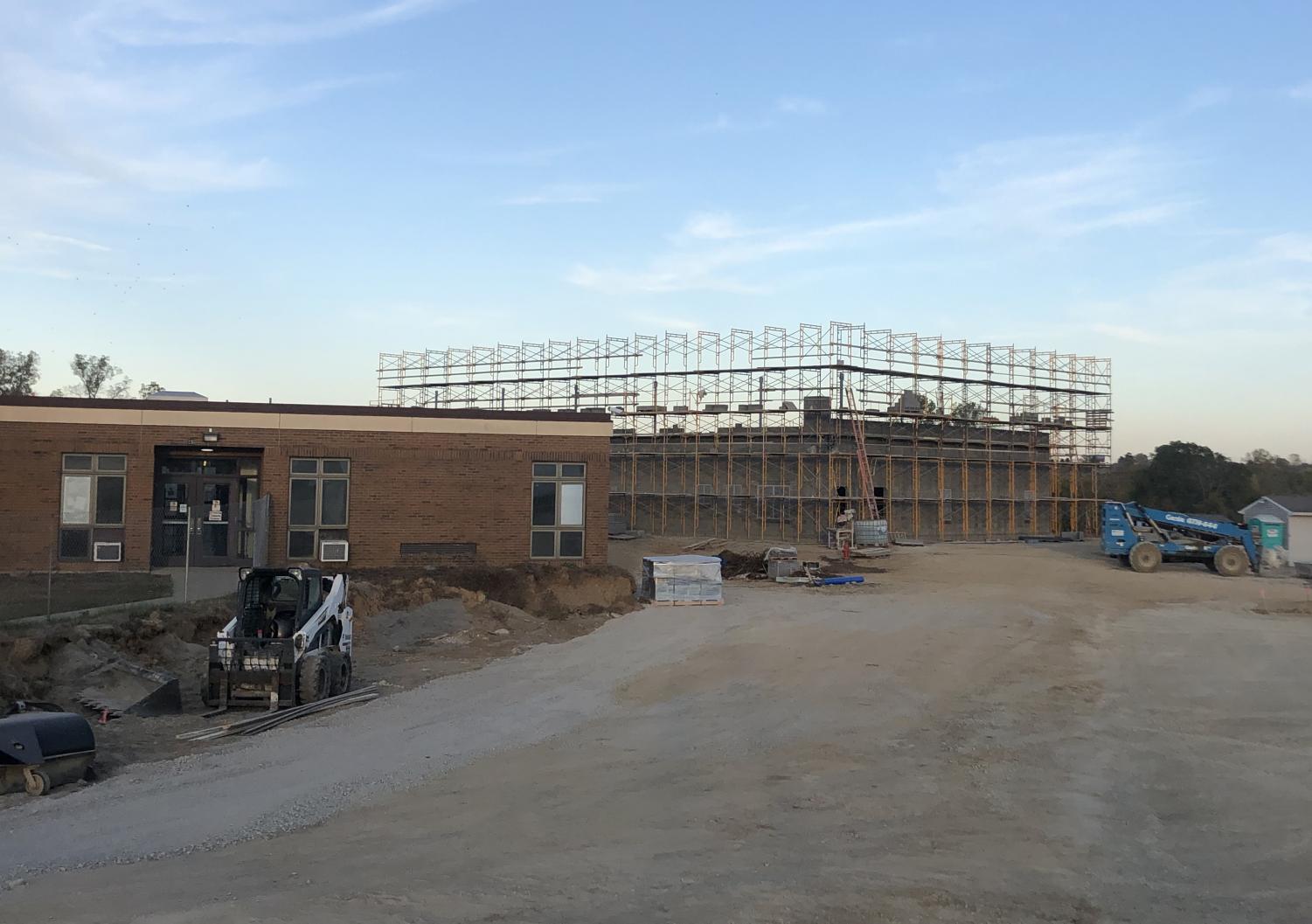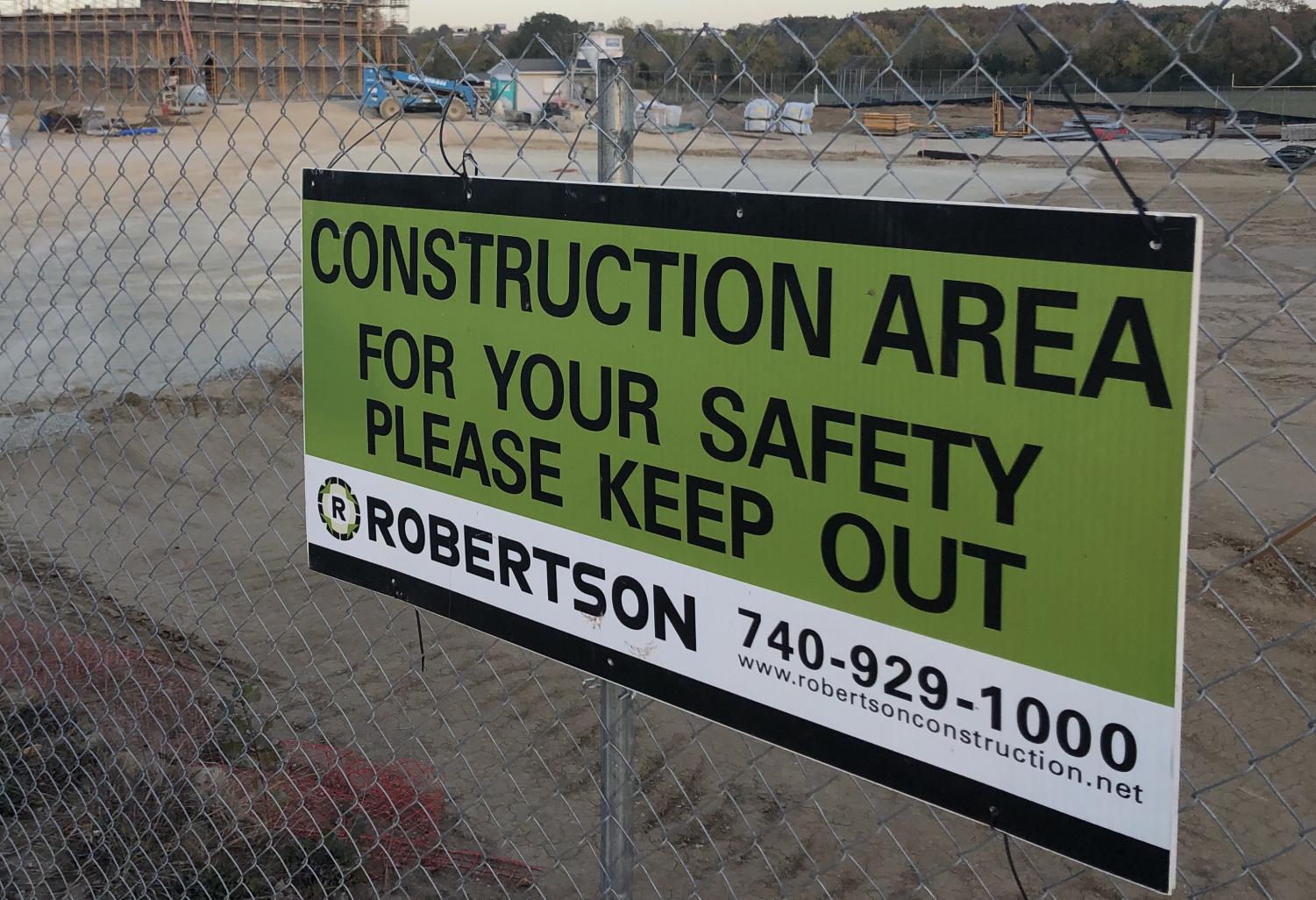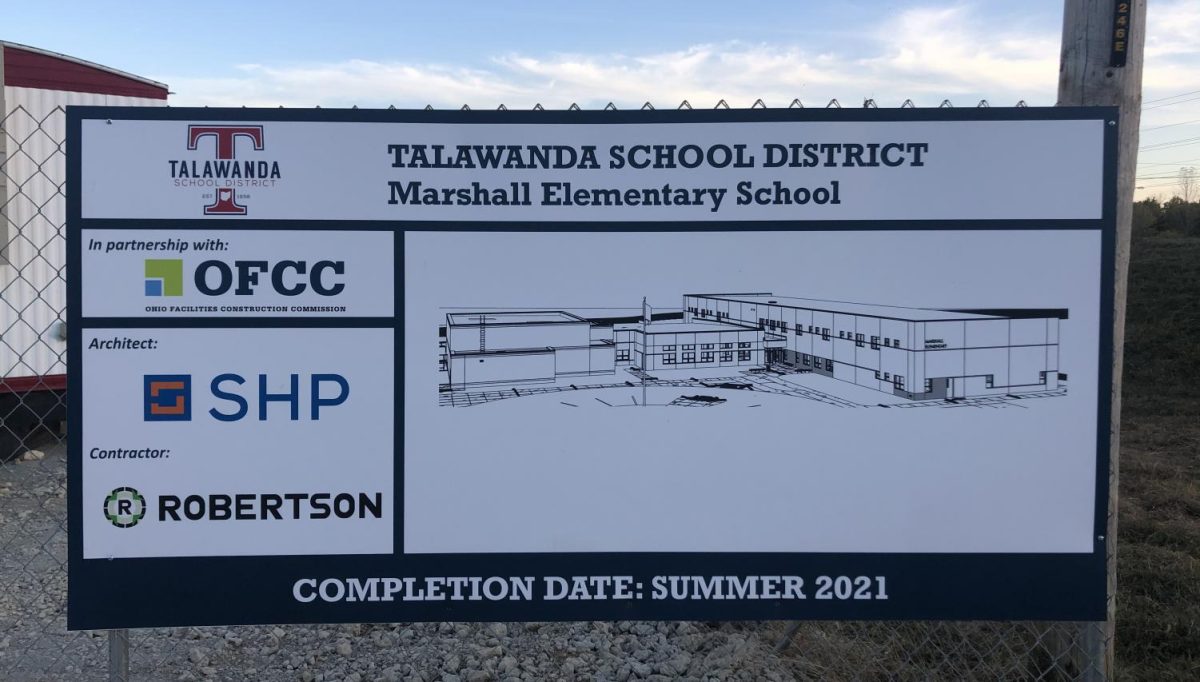New Marshall Elementary building to open August 2021
A new Marshall Elementary School on Oxford Millville Road, is being built next to the existing school. The new school is scheduled to open in August, 2021.
October 9, 2020
The new Marshall Elementary School is set to open August 2021, in time for the 2021-2022 school year.
Currently, the construction project is about 30 days behind that intended opening date, said Shaunna Tafelski, Talawanda School District treasurer. If the project does not get back on track, Tafelski said the plan has built-in contingency funding.

“We may have to go to our contingency to pay to get us back on track,” Tafelski said, “But that’s not going to exceed the original cost because it is already built into the project.”
The budget for the project has risen slightly, from $10.8 million to just over $11 million. The increase was approved by the school board, which voted to allocate an additional $247,000 in alternate funding to the project in February.
The new school is being built adjacent to the existing school, 3260 Oxford Millville Road. Once the new building is completed, most of the old school will be demolished.
Some students and teachers will return to the old elementary building Oct. 20, as the Talawanda School Board voted last week to return to offering face-to-face instruction. Tafelski said the district and project workers are striving to ensure safety standards are set before the students return.
“There’s some extra things that need to be done, even after compliance but above and beyond that, we want our children to be safe while they’re playing, at recess, on the playground and all of that,” Tafelski said.

COVID-19 has not drastically impacted the construction progress. In fact, during the time of the shelter-in-place in the spring, a lot of progress was made, said Tafelski. However, previous delays on the project include soil foundation issues and an increase in steel prices.
The school will be completely new with the exception of the existing gymnasium, said Chad Hinton, principal at the school. Updated plumbing, roofing and HVAC systems will all be installed.
“These necessities needed to be met because [they had] lived out their life,” Hinton said. “[The old school] didn’t have all the technology we use in today’s world.”
Concurrent construction of new utility lines along the road in front of the school is causing traffic on US 27 to be detoured this week, but that work and the detour are unrelated to the school construction.
“According to the permit plan, Duke is replacing three utility poles, and the closure will be in effect through Monday afternoon, Oct. 12,” said Kathleen Fuller, public information officer for the Ohio Department of Transportation.
In addition to the necessary updates in infrastructure, the district and lead architect Charlie Jahnigen, have been committed to making the new school more sustainable and energy-efficient.
The sustainability and efficiency efforts are to fulfill requirements to make Marshall Elementary a LEED Silver Certified building.
LEED (Leadership in Energy and Environmental Design) is a green building rating system that provides a framework and checklists for new and renovated buildings to become more environmentally friendly. LEED certifications are administered by the Green Building Certification Institute (GBCI).
“Projects pursuing LEED certification earn points for various green building strategies across several categories based on the number of points achieved, a project earns one of four LEED rating levels: Certified, Silver, Gold or Platinum,” according to the U.S. Green Building Council (USGBC).
In Ohio, all schools co-funded with the state must meet at least the LEED Silver level, said Jahnigen.
Jahnigen, an expert in sustainability and LEED design, led the design of Ohio’s first LEED-registered and LEED Silver Certified school, Pleasant Ridge Montessori in 2008. He said focusing on sustainable development is important to him because it is important to the community, too.
“These measures are important to me because the community of Oxford appreciates and understands what ‘sustainable buildings’ means to a community and to a public school district,” Jahnigen said.
There are many options for schools to implement to qualify for LEED Silver.
“There are a variety of design items that can help a building qualify,” said Jahnigen. “They include site features, daylighting, increased building envelope, energy-efficient HVAC systems, green finish materials, responsible stormwater management, etc.”
Talawanda High School is LEED Gold and Kramer Elementary is LEED Silver.
For Marshall Elementary, meeting the silver standard means large windows for natural lighting, recycled steel structure, recycled asphalt, sustainable flooring materials and LED lighting. But, because of financial restraints, Jahnigen said qualifying for LEED Silver will be difficult for Marshall.
“Marshall’s construction budget is tight so getting to LEED Silver is going to be a challenge,” said Jahnigen.














